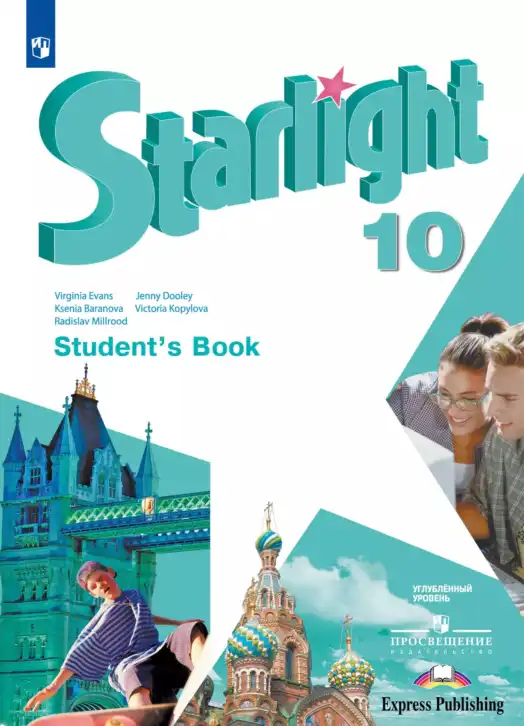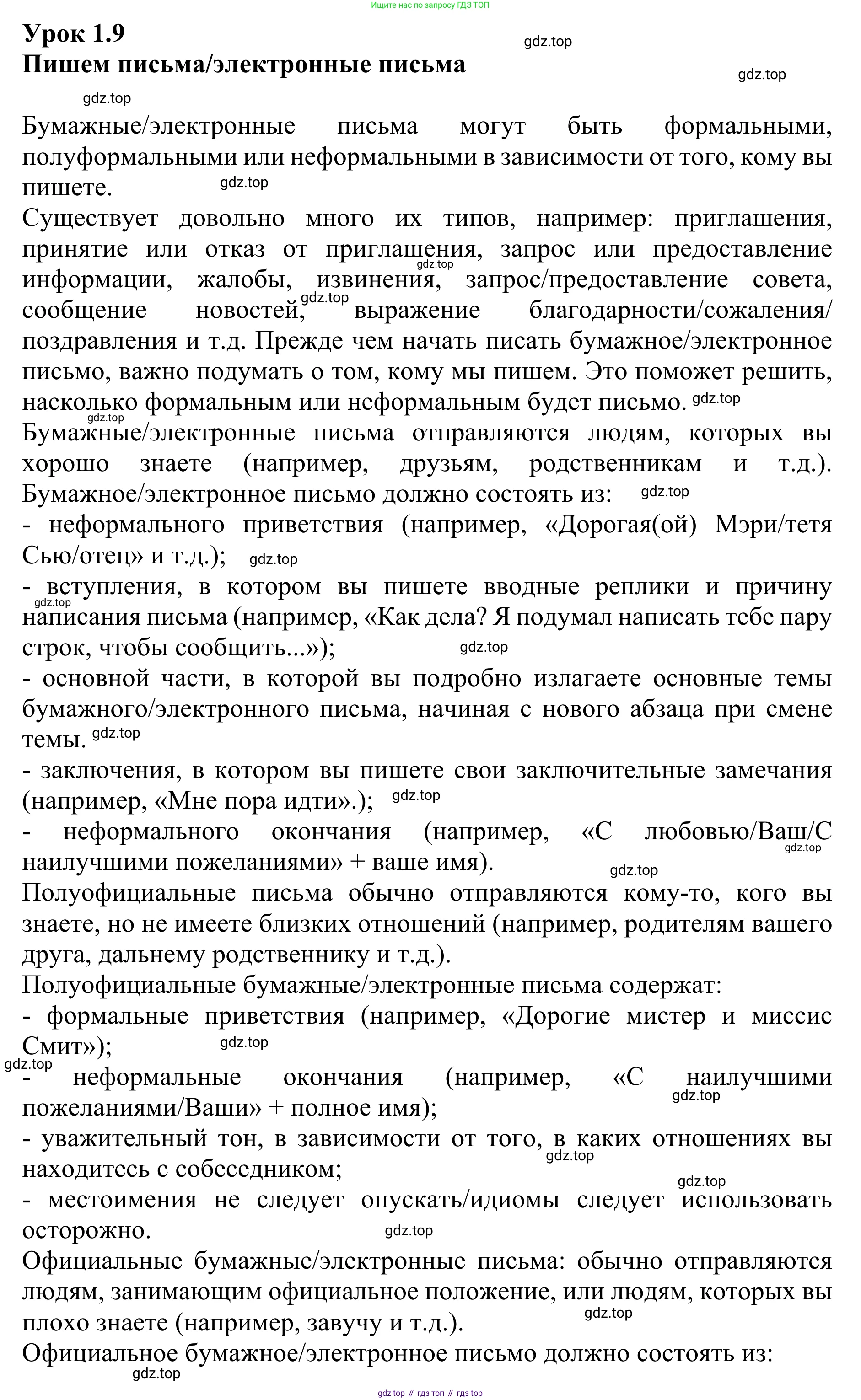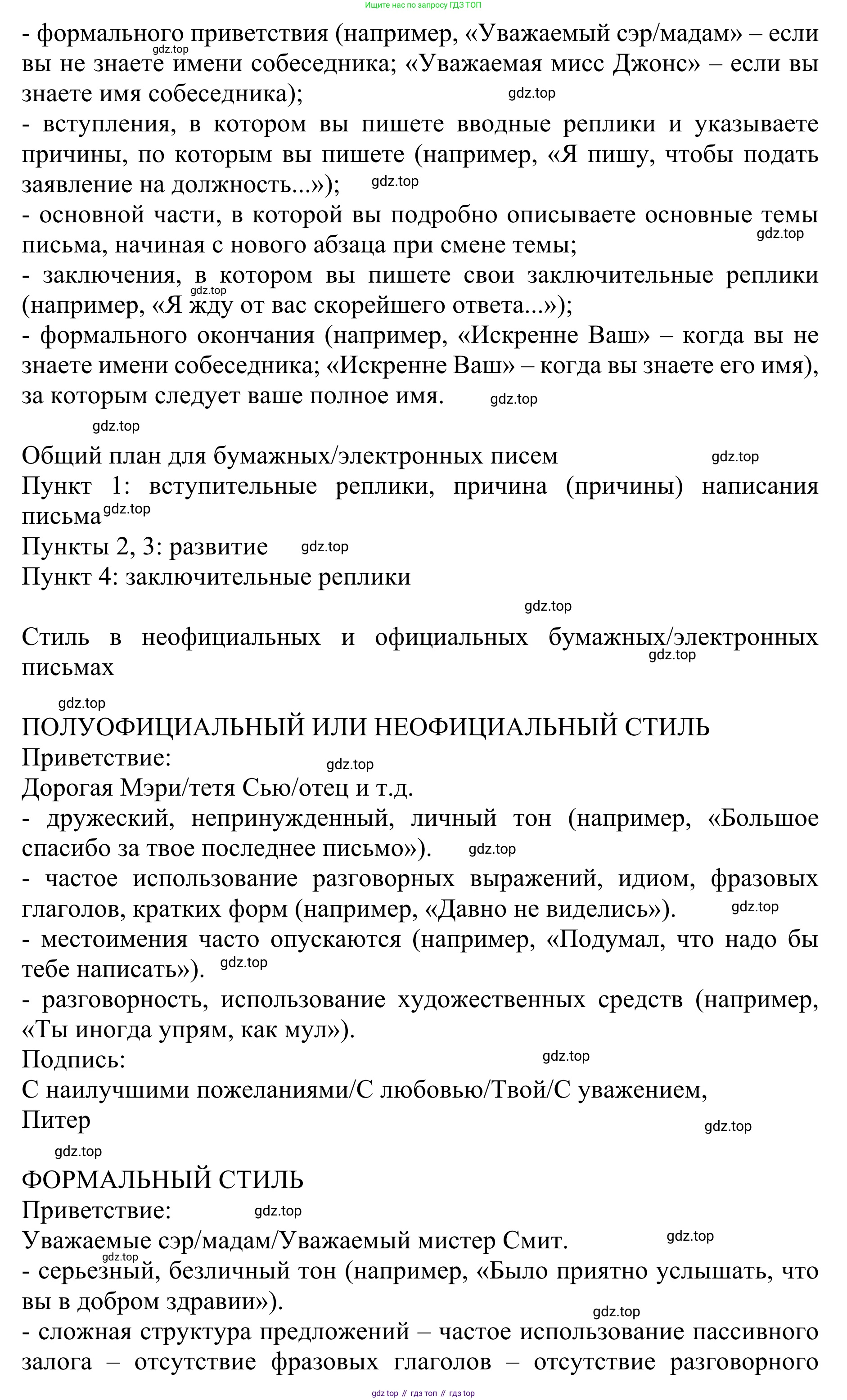Writing: letters/emails, страница 22 - гдз по английскому языку 10 класс (starlight) учебник Баранова, Дули

Авторы: Баранова К. М., Дули Д., Копылова В. В., Мильруд Р. П., Эванс В.
Тип: Student's book (Учебник)
Серия: starlight (звёздный английский)
Издательство: Просвещение, Express Publishing
Год издания: 2019 - 2025
Уровень обучения: углублённый
Цвет обложки: белый, бирюзовый
ISBN: 978-5-09-112205-3
Допущено Министерством просвещения Российской Федерации
Популярные ГДЗ в 10 классе
Module 1. Sports & Entertainment. Unit 1.9. Writing: letters/emails - страница 22.
Writing: letters/emails (с. 22)
Условие. Writing: letters/emails (с. 22)
скриншот условия

Unit 1.9 Writing: Letters/Emails
▪ Letters/Emails can be formal, semi-formal or informal depending on who you are writing to. There are quite a few types, such as: invitations, accepting or refusing invitations, asking for or giving information, applications, complaints, apologies, asking for/giving advice, giving news, expressing thanks/regrets/congratulations etc. Before we start writing a letter/email, it is important to think about who we are writing to. This helps to decide how formal/ informal the letter/email will be.
▪ Informal letters/emails are sent to people you know well (e.g. friends, relatives etc). An informal letter/email should consist of:
- an informal greeting (e.g. Dear Mary/Aunt Sue/Dad etc);
- an introduction in which you write your opening remarks and the reason for writing (e.g. How is it going? I thought I'd drop you a line to let you know ...);
- a main body in which you write the main subjects of the letter/email in detail, starting a new paragraph for each topic.
- a conclusion in which you write your closing remarks (e.g. I'd better go.);
- an informal ending (e.g. Love/Yours/Best regards + your first name).
▪ Semi-formal letters/emails are normally sent to someone you know but are not intimate with (e.g. your friend's parents, a distant relative etc). Semi-formal letters/emails contain:
- formal greetings (e.g. Dear Mr and Mrs Smith);
- informal endings (e.g. Best Wishes/Yours + full name);
- a respectful tone, depending on the relationship you have with the person;
- pronouns shouldn't be omitted/idioms should be used carefully.
▪ Formal letters/emails are normally sent to people in an official position or people you don't know well (e.g. Director of Studies etc). A formal letter/email should consist of:
- a formal greeting (e.g. Dear Sir/Madam – when you do not know the person's name; Dear Ms Jones – when you know the person's name);
- an introduction in which you write your opening remarks and mention your reasons for writing (e.g. I am writing to apply for the position of ...);
- a main body in which you write about the main subjects of the letter in detail, starting a new paragraph for each topic;
- a conclusion in which you write your closing remarks (e.g. I look forward to hearing from you as soon as possible...);
- a formal ending (e.g. Yours faithfully – when you do not know the person's name; Yours sincerely – when you know the person's name) followed by your full name.
Style in informal and formal letters/emails
SEMI-FORMAL OR INFORMAL STYLE
Greeting:
Dear Mary/Aunt Sue/Dad, etc
- friendly, relaxed, personal tone (e.g. Thanks so much for your last letter.)
- frequent use of colloquial expressions, idioms, phrasal verbs, short forms (e.g. It's been ages since we hooked up.)
- pronouns are often omitted (e.g. Thought I'd drop you a line.)
- chatty, use of literary devices (e.g. You're as stubborn as a mule sometimes.)
Sign off:
Best wishes/Love/Yours/Regards,
Peter
FORMAL STYLE
Greeting:
Dear Sir/Madam/Dear Mr Smith,
- serious, impersonal tone (e.g. It was pleasing to hear that you are in good health.)
- complex sentence structure – frequent use of passive voice – no phrasal verbs – no colloquial English – advanced vocabulary – no short forms (e.g. The item in question, which I received last week, was damaged in transit.)
Sign off:
Yours faithfully,/Yours sincerely,
Peter Brown
General outline for letters/emails
Paragraph 1: opening remarks, reason(s) for writing
Paragraphs 2, 3: development
Paragraph 4: closing remarks
Решение 1. Writing: letters/emails (с. 22)



Другие задания:
Помогло решение? Оставьте отзыв в комментариях ниже.
Присоединяйтесь к Телеграм-группе @top_gdz
ПрисоединитьсяМы подготовили для вас ответ c подробным объяснением домашего задания по английскому языку за 10 класс, для упражнения Writing: letters/emails расположенного на странице 22 к Учебник (Student's book) серии звёздный английский , starlight (старлайт) 2019 года издания для учащихся школ и гимназий.
Теперь на нашем сайте ГДЗ.ТОП вы всегда легко и бесплатно найдёте условие с правильным ответом на вопрос «Как решить ДЗ» и «Как сделать» задание по английскому языку к упражнению Writing: letters/emails (с. 22), авторов: Баранова (Ксения Михайловна), Дули (Дженни ), Копылова (Виктория Викторовна), Мильруд (Радислав Петрович), Эванс (Вирджиния ), ФГОС (старый) углублённый уровень обучения учебного пособия издательства Просвещение, Express Publishing.


















